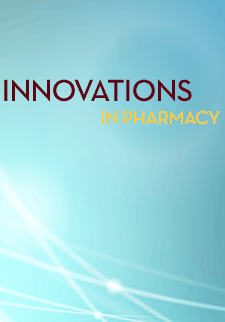TikTok: An Opportunity for Antibiotic Education?
Emma Evans
Department of Veterans Affairs
Lauren Biehle Gory
University of Wyoming
Aislinn O'Kane
Indiana University School of Medicine
DOI: https://doi.org/10.24926/iip.v13i4.4916
Keywords: Social Media, TikTok, Antibiotics, Education
Abstract
Health information and misinformation on social media have become a growing concern for the medical community. Antimicrobial resistance continues to advance, threatening public health and safety. TikTok, a popular social media platform, provides an avenue for providers to educate patients on clinical topics and medication use. As leaders in patient education and counseling, pharmacists are equipped to provide trustworthy information on TikTok and other platforms. Pharmacists can thus advance the practice of pharmacy and build rapport with patients through a new medium. Current health-related videos on TikTok have not been robustly evaluated for quality and reliability. This study evaluates antibiotic-related content from healthcare providers and non-healthcare providers on TikTok for balance, reliability, and quality using the DISCERN score.
Introduction: Antimicrobial resistance is increasing at an alarming rate. Patient education is a critical component of both stewardship and combating health misinformation. TikTok is a video-sharing social media platform with 1 billion monthly users and contains videos that discuss health information. The objective of this study was to evaluate antibiotic-themed TikTok videos for their validity and reliability.
Methods: In March 2021, a search on TikTok using the term “antibiotics” was performed and the top 300 consecutive videos were identified. The following data was collected for each video: number of likes, associated disease state, medications, educational aim, mention of COVID-19, and if performed by a healthcare professional (HCP). Non-English language videos were excluded. The DISCERN score was used to evaluate all videos for reliability. Chi-square and Mann-Whitney U were used for statistical analysis. A p-value less than .05 was considered statistically significant.
Results: The first 300 consecutive videos were assessed using the DISCERN score for validity. Of the 300 videos, the majority (n=224) were created by non-health care professionals (non-HCPs). The number of “likes” per video ranged from 1 like to 2 million likes with a mean of 34,949 ± 143,482. Videos produced by HCPs were significantly more valid and reliable (mean DISCERN score of 1.65 vs 1.17, p <0.00001) than non-HCPs. They were found to be more relevant (p<0.00001), have clearer aims (p<0.00001), and were more balanced/unbiased (p=0.00188). Videos created by HCPs were more likely to have an educational focus (p<0.0001). There was no difference between groups in clarity of sources utilized or risk/benefits discussed of each treatment. Across all videos, the most common disease states mentioned were urinary tract infection, skin and soft tissue infection, upper respiratory tract infection, and dental infection. Herbal or supplement products, penicillins, and sulfa antibiotics were the most commonly discussed medications.
Conclusions: Videos created by HCPs were significantly more valid and reliable than those created by non-HCPs. The videos created by HCPs were also more likely to have clear aims and be more relevant. However, the majority of the videos evaluated were created by non-HCPs. It may be beneficial for HCPs to provide informative TikTok videos that are valid and reliable for patient education.



